As Israel’s Desert Truffles Become Scarce, a Researcher Works to Grow Them as Crops
Decades of work have led to a breakthrough.
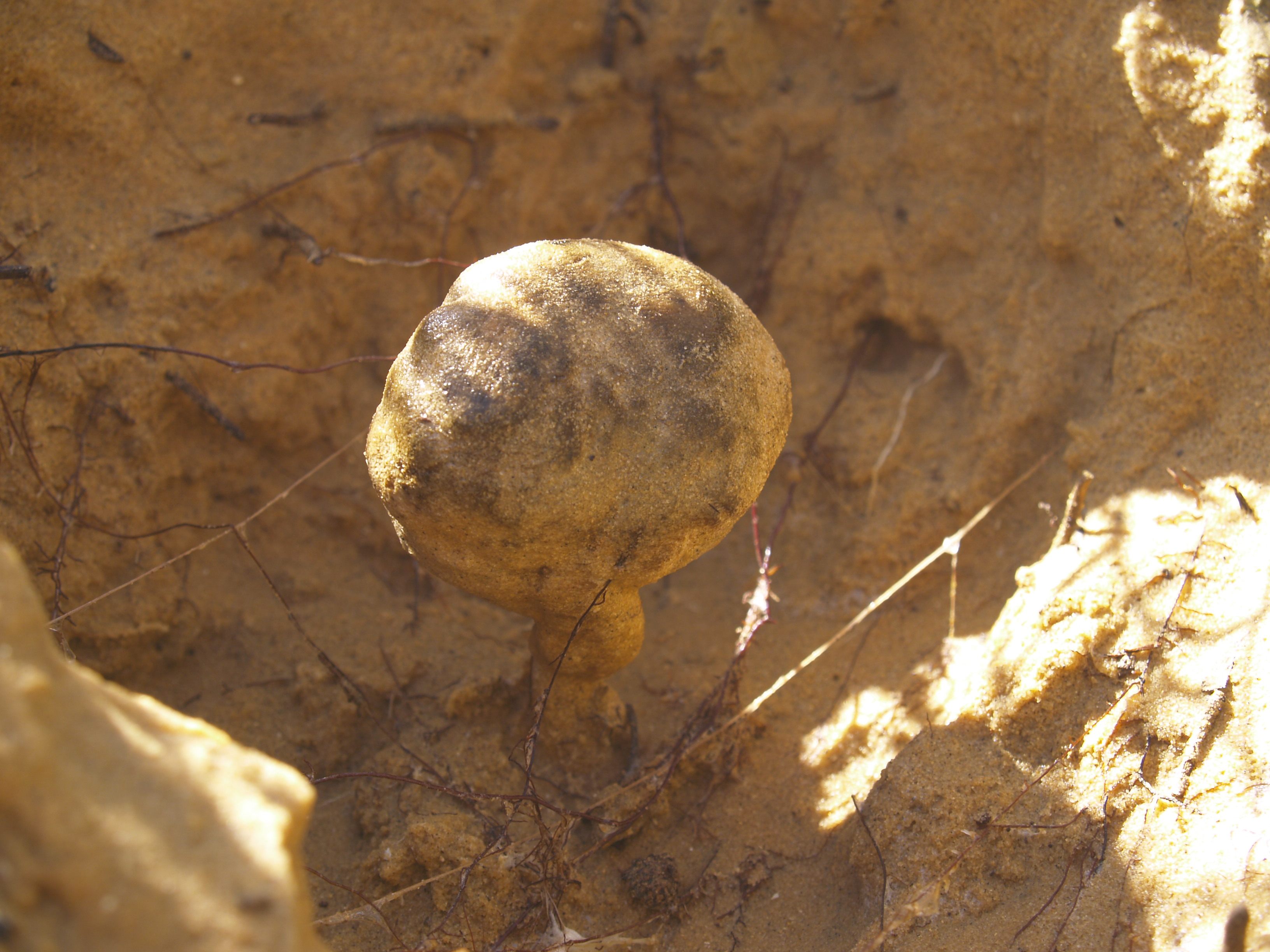
The goats scuffling across Israel’s Negev desert manage to eke out an occasional grassy nibble from the undulations of dusty sand and sunbaked rock that comprise much of the country. But where a human can find sustenance in the vast region is not immediately apparent. Of course, it helps to know where and how to look.
Bedouins have long extracted truffles from this otherwise inhospitable ground, tracking them by their proximity to certain desert plants and the telltale spidery cracks that form in the earth above them after a storm. For one or two months of the year, some Bedouins consume these truffles as staple foods, using them as replacements for potatoes in stews or roasting them over a fire. They also forage them to sell in urban markets.
But increasingly rare rains, mounting temperatures, and overexploitation have greatly reduced the number of desert truffles in the wild. Which is why, for the last 13 years, plant and fungus physiologist Yaron Sitrit has been working to turn one species of desert truffle, Terfezia boudieri, into a farmable crop.

It hasn’t been easy. “I want to finish the work, then retire,” Sitrit says. This particular work has already seen the retirement of at least two other researchers at Ben-Gurion University in Be’er Sheva, where Sitrit’s lab is located. They passed their project on to Sitrit after 20-odd years of toil, at a point where all three of them imagined that a breakthrough was nigh. “I did think that we were quite close” to figuring out how to grow the truffles, Sitrit says. But, “frustration is part of the business.”
A truffle is the fruiting body of a fungus that releases spores to create more fungus. Although some species of truffle—Périgord’s coveted Tuber melanosporum among them—are cultivated in woody tracts in France, Italy, and other parts of Europe, a Middle Eastern desert truffle is another thing entirely. With its texture like a chestnut and a mild flavor Sitrit compares to bacon, the desert truffle is an everyman’s food that, in abundant years past, might have cost only 50 shekels, or about $14 a kilo in the market.
European truffles grow in what’s called a mycorrhizal partnership between the mycelium of the fungus, which is its vegetative part, and trees such as oak and hazelnut. Underground, the mycelium spreads via threadlike strands called hyphae. These attach to a tree’s roots to create a mutually beneficial system of coexistence. The hyphae expand the reach of the roots, giving them access to more distant water, minerals, and nutrients than they might be able to reach otherwise; in return, the roots pump the hyphae full of sugars.
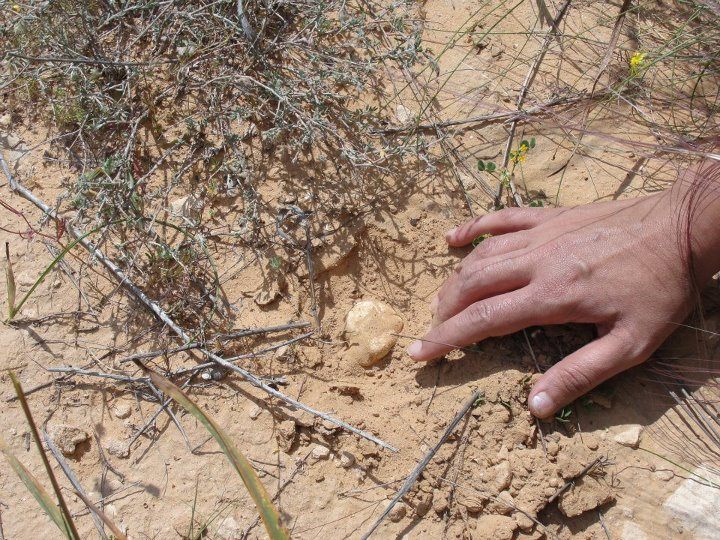
The same sort of symbiosis exists for desert truffles, too. Only, their partners are scrubby shrubs in the rock rose family. Terfezia boudieri’s particular host plant is Helianthemum sessiliflorum, which has slim, dark leaves and twigs studded with small yellow flowers.
Sitrit calls it “spoiled.” “You’d think it would be hardy because it lives in the desert, but it needs shade, and not too much irrigation,” he says. Plus, both plant and fungi enter into dormancy in the summer rather than in the winter; and, due to the very short rainy season, they have a very short time to interact.
It doesn’t help that the extensive knowledge European truffle growers have in cultivating their fungi is pretty much useless in the Negev. When Sitrit took on the desert truffle project 13 years ago, there were some known quantities: how to grow the persnickety Helianthemum, and how to grow the truffle fungus in a petri dish. But putting the two together was a stumbling block. This was complicated by the fact that it had barely rained in the Negev for the previous five years. Sitrit had no luck finding the truffles in the wild, and the few for sale were incredibly expensive. So, Sitrit fiddled with inoculating the plants with mycelia rather than spores from the truffles. “It was hell,” he says. A small experimental plot eventually yielded only two truffles from hundreds of plants.
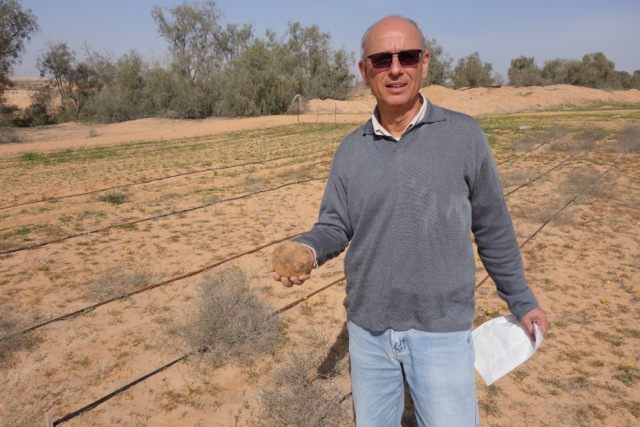
Sitrit moved his dirt-bound experiments to a farm south of Be’Er Sheva, in Ramat Negev. There, he and his colleagues tinkered with irrigation, the genotype of the host plants they were using, and even the spacing between plants. “How many plants per hectare? How many centimeters between the plants? Simple questions,” he says. His truffle yields did increase, but they still weren’t abundant enough to give to farmers as a commercial crop. First, “we needed to increase the yields.”
Just when and how much to inoculate the young plants with the spores took some trial and error. So did understanding how to arrange the plants in the field: rows worked okay. But tight blocks worked much better. “Blocks let the plants and the fungi form a coalition, with several plants supporting three or four fruit bodies,” he says. He also played around with dried truffle spores instead of mycelia, scouring them with sandpaper before incubating them in petri dishes.
Finally, Sitrit took what he felt was a much improved process out to the field. Last February, when he dug up his truffles, he found he’d gotten 170 kilos of truffles per hectare, with the largest weighing in at around half a kilo, or more than a pound. A black winter Périgord truffle that size could fetch an easy $2,000. But Sitrit points out that the humble Terfezia boudieri doesn’t possess any of the prized, sulfurous aromas of Tuber melanosporum. “It’s different,” says Sitrit. “But it’s ours, so it’s the best.”
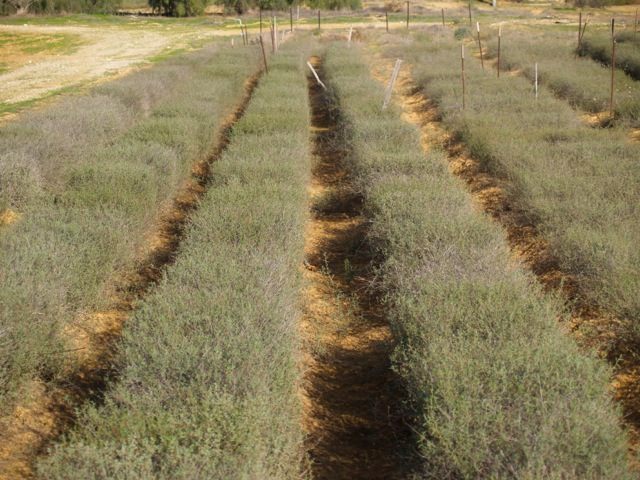
Sitrit is so close to success he can almost taste it. He just wants to double those yields, “to be sure,” he says. And he’s still fiddling. Next year he plans to let any new Helianthemum plants that pop up in the field on their own grow to maturity, to see if they’ll form their own mycorrhizal partnerships with the fungi that’s already down in the dirt. That could mean that inoculated plants might only have to be stuck in the ground every 6 or 7 years in order to yield a regular crop of truffles each winter.
Sitrit hopes that in a year or two he can approach farmers—Jewish, Druze, Bedouin, whoever’s interested—and get them to farm truffles on a much larger scale before taking the whole thing commercial. “I’m getting older; I hope we do it,” he says. He mentions retiring again.
Still, a while back Sitrit collected some samples of another desert truffle called Tirmania nivea, a slightly more pungent fungus than Terfezia boudieri, a cousin of which researchers in Spain have been working to cultivate. Sitrit’s noodled around with Tirmania and stuck some inoculated plants in the ground, just to see what happens. “It’s not a crop. I wish it would be,” he says. With those words, the prospect of his retirement seems a little further away.
Gastro Obscura covers the world’s most wondrous food and drink.
Sign up for our email, delivered twice a week.



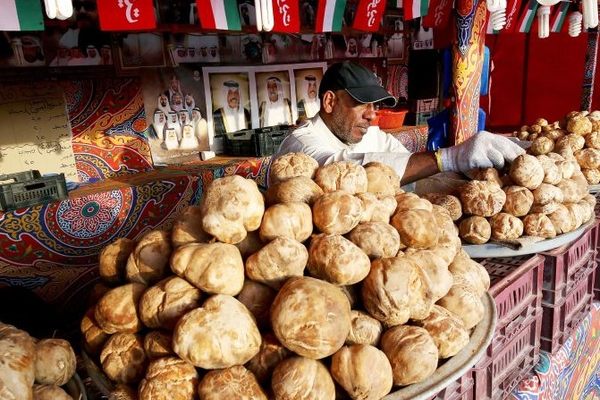


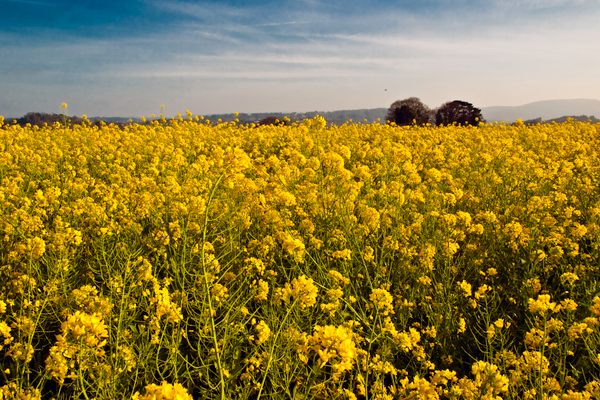


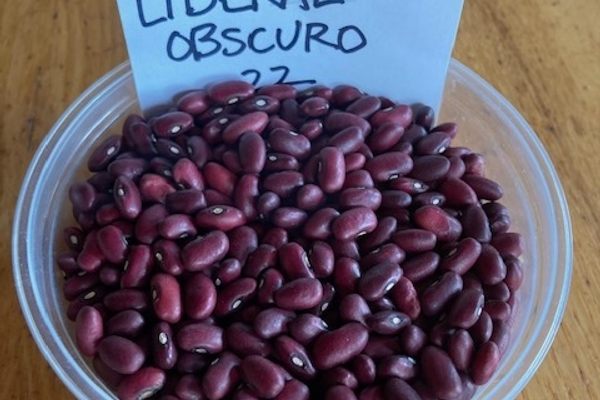












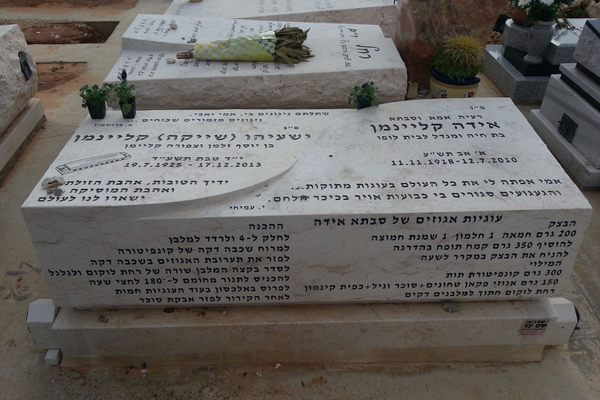








Follow us on Twitter to get the latest on the world's hidden wonders.
Like us on Facebook to get the latest on the world's hidden wonders.
Follow us on Twitter Like us on Facebook